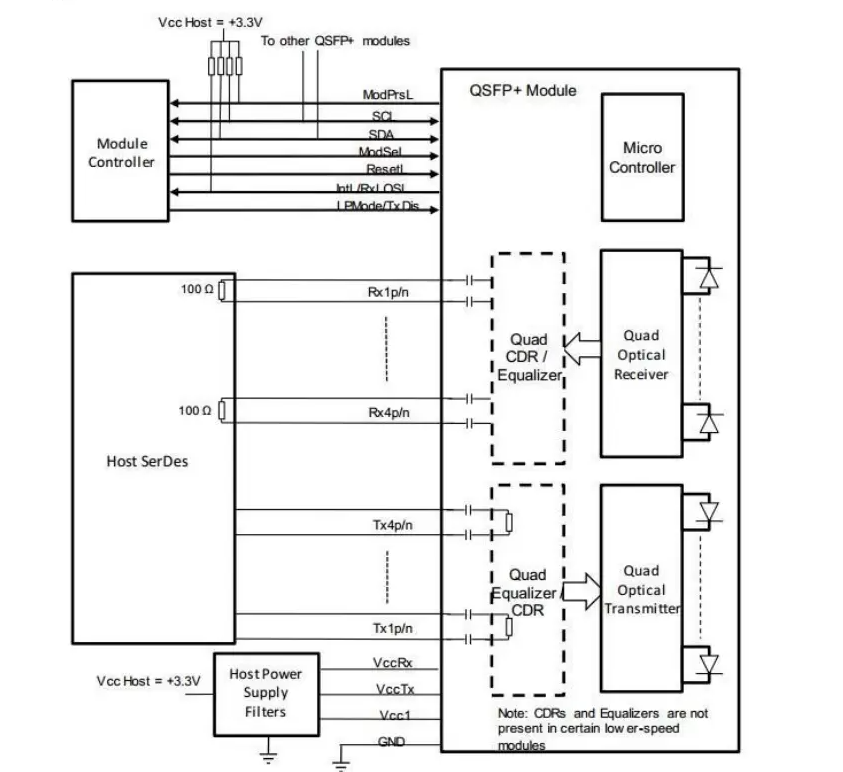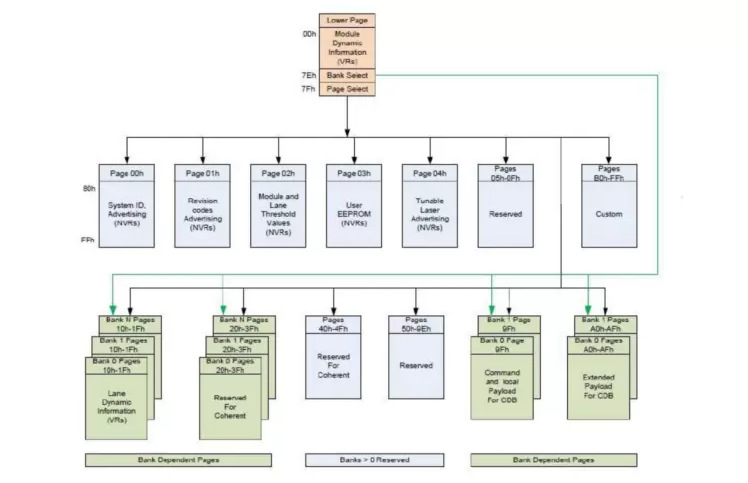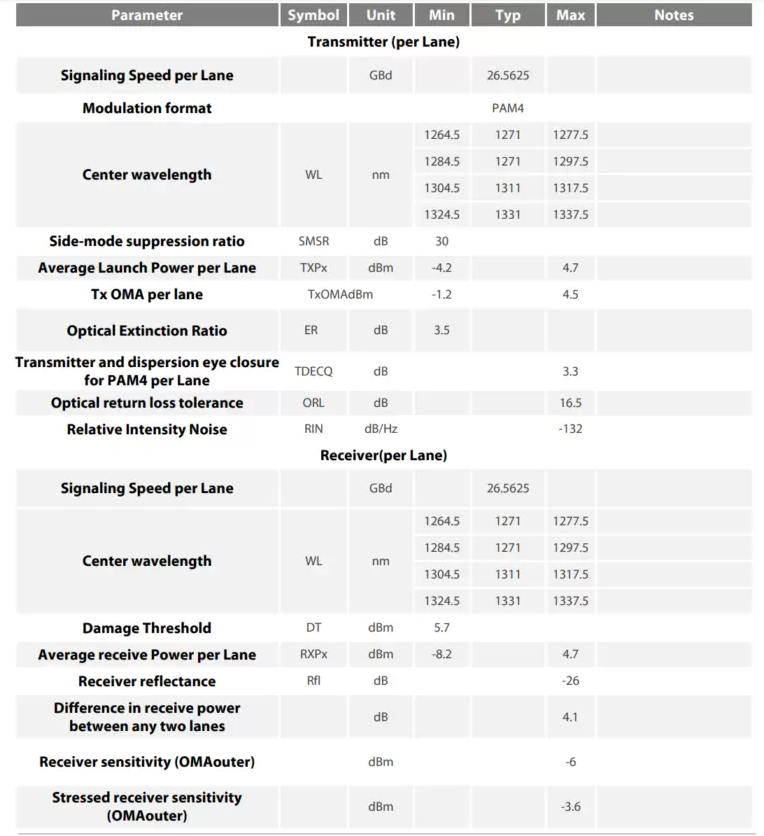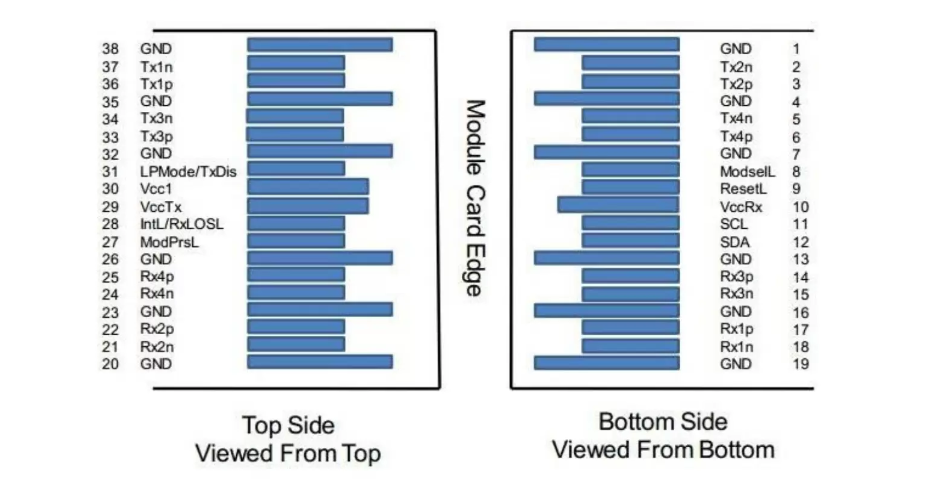

 Knowledge Base +
Knowledge Base +  2024.01.18
2024.01.18Overview of 200G QSFP56 Transceiver
Benefits of Using 200G QSFP56 Transceiver
How Does 200G QSFP56 Transceiver Work?
What is a 200g qsfp56 transceiver and its benefits?
Exploring the Compatibility of 200G QSFP56 Transceiver with Other Devices
What are the applications of a 200g qsfp56 transceiver?
What are the critical considerations when using a 200g qsfp56 transceiver?
The 200G QSFP56 transceiver is a hot-pluggable optical module that supports data transmission at up to 200 Gbps. It is designed as a small form-factor pluggable (SFP) interface for high-speed networking applications like data centers, enterprise networks, cloud computing, and telecommunications networks. The QSFP56 transceiver is compatible with various fiber types, including single-mode and multimode fibers.
The 200G QSFP56 transceiver offers several benefits for modern networking equipment. It provides high-speed data transmission with low power consumption, which makes it an efficient solution for data centers and enterprise networks. The QSFP56 transceiver also supports modulation techniques, such as PAM4 and NRZ, to improve signal integrity and reduce noise. Additionally, the QSFP56 transceiver allows easy upgrades and replacements without interrupting the network operation.

The QSFP56 transceiver uses a combination of optical and electrical interfaces to transmit and receive data signals. On the visual side, the transceiver converts electrical signals into optical signals using a laser or LED light source and a modulator. The optical signals are then transmitted through a fiber optic cable to the receiving end, where they are converted back into electrical signals. On the electrical side, the QSFP56 transceiver uses a high-speed electrical interface to send and receive calls from the host equipment.
Explanation of the Optical Interface
The QSFP56 transceiver uses a Multimode Fiber (MMF) or Single-Mode Fiber (SMF) optical interface to transmit and receive data signals. The MMF interface supports up to 70m of transmission distance, while the SMF interface supports up to 10km. The optical interface also supports various wavelengths and channels to handle different types of data traffic, such as Ethernet, InfiniBand, and Fibre Channel.
Electrical Interface and Data Rate Support
The QSFP56 transceiver uses a high-speed electrical interface to connect to the host equipment, such as a switch or a router. The electrical interface supports up to four data transmission lanes, and each route can operate at a speed of up to 50Gbps. Therefore, the QSFP56 transceiver can support data transmission at up to 200Gbps. The electrical interface also complies with various industry standards, such as the IEEE 802.3bs and InfiniBand EDR.

Modulation Techniques Used in 200G QSFP56 Transceivers
The QSFP56 transceiver supports various modulation techniques to improve signal integrity and reduce noise. The most commonly used modulation techniques include Pulse Amplitude Modulation-4 (PAM4) and Non-Return-to-Zero (NRZ). PAM4 is a four-level signaling scheme that doubles the data rate while reducing the signal-to-noise ratio. NRZ is a two-level signaling scheme that preserves the data rate but is more susceptible to signal degradation and noise. Therefore, the choice of modulation technique depends on the specific application requirements.

This transceiver module is designed to operate at a data rate of 200Gbps and is compatible with various network devices.
Overview of Compatible Devices and Form Factors
The 200G QSFP56 transceiver is compatible with many devices, such as Ethernet switches, routers, servers, and storage devices. The form factors of these devices vary, but the transceiver module can seamlessly connect with them using a compatible connector. For instance, the QSFP56 transceiver can link with Ethernet switches featuring QSFP56 ports.
Interconnection Options with 200G QSFP56 Transceivers
The 200G QSFP56 transceiver can be connected to other devices using different interconnection options such as direct attach copper, active optical cables, and fiber optic cabling. Direct attach copper (DAC) is a cost-effective solution that transmits data over copper wires, while active optical cables (AOC) consist of fiber optics and offers better heat dissipation. Fiber optic cabling utilizes glass or plastic fibers to transmit data longer distances. One of these interconnection options may be more suitable depending on the network application.
Breakout Configurations for 200G QSFP56 Transceivers
The 200G QSFP56 transceiver can be configured in breakout modes, allowing for more flexible and customized networking setups. The two primary breakout configurations for the QSFP56 transceiver are 4x50G and 2x100G. The 4x50G configuration splits data into four 50Gbps channels, enabling the module to connect with four different network devices. The 2x100G configuration divides the data into two 100Gbps channels, increasing the connection range and providing more incredible data transmission speed.
Best Practices for Integrating 200G QSFP56 Transceivers
When integrating 200G QSFP56 transceivers, it’s essential to ensure that the devices and interconnects are compatible. Network administrators and data center operators must verify the compatibility of the connectors, form factors used, and the interconnect option employed. It’s also crucial to follow the manufacturer’s guidelines carefully during the installation and testing of the transceivers. Proper handling, cleaning, and maintenance of the transceiver modules are also necessary to ensure optimal performance.

Usage in Data Centers for High-Speed Ethernet
Data centers require high-speed connectivity for their mission-critical applications. The 200G QSFP56 transceiver is ideal due to its high bandwidth and low latency. It can be used for applications such as server-to-switch interconnects, storage area networks, and high-performance computing clusters. Additionally, QSFP56 transceivers can be used for 50G and 100G data transmission, making them a versatile option for data center networks.
Applications in 200G Ethernet Networks
The demand for faster and more efficient communication networks drives the adoption of 200G Ethernet networks. The QSFP56 transceiver is the preferred option for these networks due to its compatibility with 200G Ethernet standards. They can be used for various applications, such as switches, routers, and servers. The QSFP56 transceivers are also backward compatible with existing 100G Ethernet networks, making them an ideal choice for network upgrades.
The deployment of QSFP56 transceivers is gaining momentum in various industries. In telecommunications, companies such as AT&T and Verizon leverage these transceivers to upgrade their 5G networks. The financial services industry also uses QSFP56 transceivers for their high-speed trading platforms. Cloud service providers such as Amazon Web Services and Google Cloud use QSFP56 transceivers for their data center networks.
Future Implications and Developments
As data rates continue to increase, there will be a growing need for higher-speed optical modules. The QSFP-DD and OSFP form factors are expected to become the standard for 400G Ethernet networks, but QSFP56 transceivers will remain the preferred option for 200G Ethernet networks. Advances in silicon photonics and new manufacturing techniques will continue to improve the performance and reliability of QSFP56 transceivers. In the coming years, we expect to see increased adoption of QSFP56 transceivers in various industries.
Compliance with industry standards and specifications
It is essential to adhere to industry standards and specifications when using the 200g qsfp56 transceiver. Following these standards ensures the transceiver performs optimally and provides a reliable and secure network connection. Industry standards such as IEEE 802.3 standards and Multi-source Agreements (MSAs) ensure interoperability between different vendors’ devices, reducing the risk of compatibility issues.
Supported wavelengths and cable types
The 200g qsfp56 transceiver supports various wavelengths, ranging from 850nm to 1550nm. Each wavelength has its unique range and distance limitation. Choosing the right wavelength depends on the application’s requirements, including distance and bandwidth. The supported cable types include copper, multimode fiber (MMF), and single-mode fiber (SMF). Copper cables typically have a shorter range but provide high data rates at a low cost. On the other hand, fiber cables offer longer transmission distances and higher data rates, albeit at a higher price.
Potential issues and challenges
Several challenges may arise when using the 200g qsfp56 transceiver, including signal distortion, electromagnetic interference, temperature, and power control. Signal distortion can occur due to different cable lengths and connectors. Electromagnetic interference (EMI) may occur with inadequate shielding, resulting in signal degradation. Temperature and power control are crucial considerations since they affect the transceiver’s reliability and can cause the device to malfunction.
Troubleshooting strategies
Several troubleshooting strategies can be employed to resolve any potential issues with the 200g qsfp56 transceiver. First, ensure the device’s firmware is up-to-date and that all the required drivers are installed. Also, check for any physical damages to the connector, cable, or transceiver. It could be that the cable connections are not secure, resulting in signal dropouts. Sometimes, a software error or a mismatch in the configuration can cause problems. In such instances, resetting the configuration parameters can solve the issue.
Subscribe to the newsletter
for all the latest updates.
2-5# Building, Tongfuyu Industrial Zone, Aiqun Road, Shiyan Street, Baoan District, Shenzhen. China
